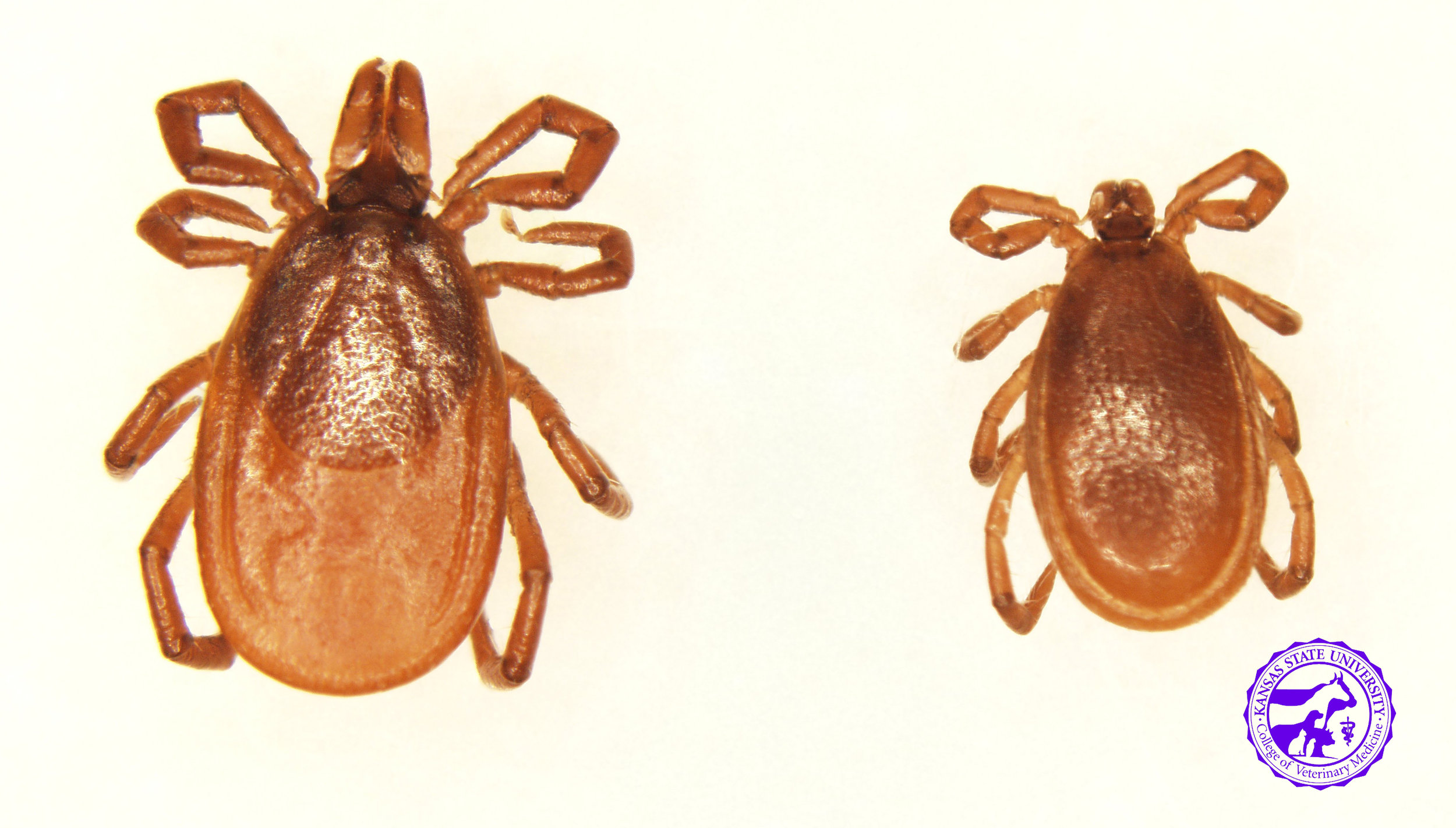Have you seen these ticks on your horse? Hover over each image for more info!

Lone Star Tick
Amblyomma americanum
Range- southern US, but expanding north
Active season- late spring, early summer
Disease transmission to horses- none known
Disease transmission to humans- ehrlichiosis; possibly Rocky Mountain Spotted Fever

Gulf Coast Tick
Amblyomma maculatum
Range- southern, gulf coast states, but expanding north
Active season- late summer, early fall
Disease transmission to horses- “Gotch Ear”: permanent ear tissue damage due to prolonged bite
Disease transmission to humans- known to carry bacteria related to Rocky Mountain Spotted Fever

Winter Tick
Dermacentor albipictus
Range- all across North America
Active season- winter
Disease transmission to horses- irritation and blood loss due to high numbers in one infestation
Disease transmission to humans- none known

American Dog Tick/ Rocky Mountain Wood Tick
Dermacentor variabilis / Dermacentor andersoni
These ticks look identical, and DNA must be analyzed to accurately identify.
Range- D. variabilis- throughout US, except the Rocky Mountains
D. andersoni- confined to Rocky Mountains
Active season- spring, early summer
Disease transmission to horses- inflammation, open wounds and proud flesh
Disease transmission to humans- Rocky Mountain Spotted Fever

Deer Tick/ Western Black Legged Tick
Ixodes scapularis / Ixodes pacificus
These ticks look identical, and DNA must be analyzed to accurately identify.
Range- I. scapularis- throughout the eastern US
I. pacificus- western coast of US
Active season- fall, winter
Disease transmission to horses- Lyme disease, Equine Granulocytic Anaplasmosis
Disease transmission to humans- Lyme disease, Anaplasmosis, Powassan virus, Babesiosis

Spinose Ear Tick
Otobius megnini
Range- western US
Active season- year round
Disease transmission to horses- abnormal behavior due to severe irritation in ear or ear canal
Disease transmission to humans- none known